Let op!
De website die je probeert te laden werkt niet in Internet Explorer. Wij adviseren je gebruik te maken van één van onderstaande browsers:
Windpark Fryslân built by contracting consortium Zuiderzeewind (Siemens Gamesa Renewable Energy and Van Oord Offshore Wind) in the IJsselmeer. The wind farm comprises 89 turbines of 4.3 megawatts (MW). Annually, WFF produces 1.5 terawatt hours* (1,500,000 megawatt hours). This is approximately 1.2% of the electricity use in the Netherlands, corresponding to the consumption of some 500,000 households. Windpark Fryslân is the largest wind farm in the world in an inland water. The wind farm is operational from 2021.
*The annual electricity consumption in the Netherlands is shown in terawatt hours (TWh), or billions of kWh.
The Wind Farm comprises the following:
Windpark Fryslân consists of 89 4.3 megawatt (MW) turbines. Annually, WFF produces 1.5 terawatt hours* (1,500,000 megawatt hours). This is approximately 1.2% of the electricity use in the Netherlands, corresponding to the consumption of about 500,000 households.
89 wind turbines in the IJsselmeer.
Frisian wind energy for 500,000 households.
CO2 reductions of approximately 800,000 tonnes per year.
Windpark Fryslân has a unique form. The wind turbines are arranged in the form of a hexagon. This arrangement ensures that the wind turbines disrupt the view as little as possible. The distance between the wind turbines is approximately 600 metres.

The wind turbines of Windpark Fryslân are 180 metres tall. As a comparison: the Achmea tower in Leeuwarden is 115 metres tall. Factories in places as diverse as Friesland, Poland, Germany, Vietnam, Portugal and Morocco have manufactured parts of the wind turbines. These include the internal and external platforms, the foundations, the towers, the rotors (rotating part of the generator) and the blades.
The company Amicon (previously Bijlsma Constructies) from Winsum in Friesland has build the ‘internal platforms’ for the wind turbines. Watch here the vlog with Symen de Boer of Amicon about the construction of the internal platforms.
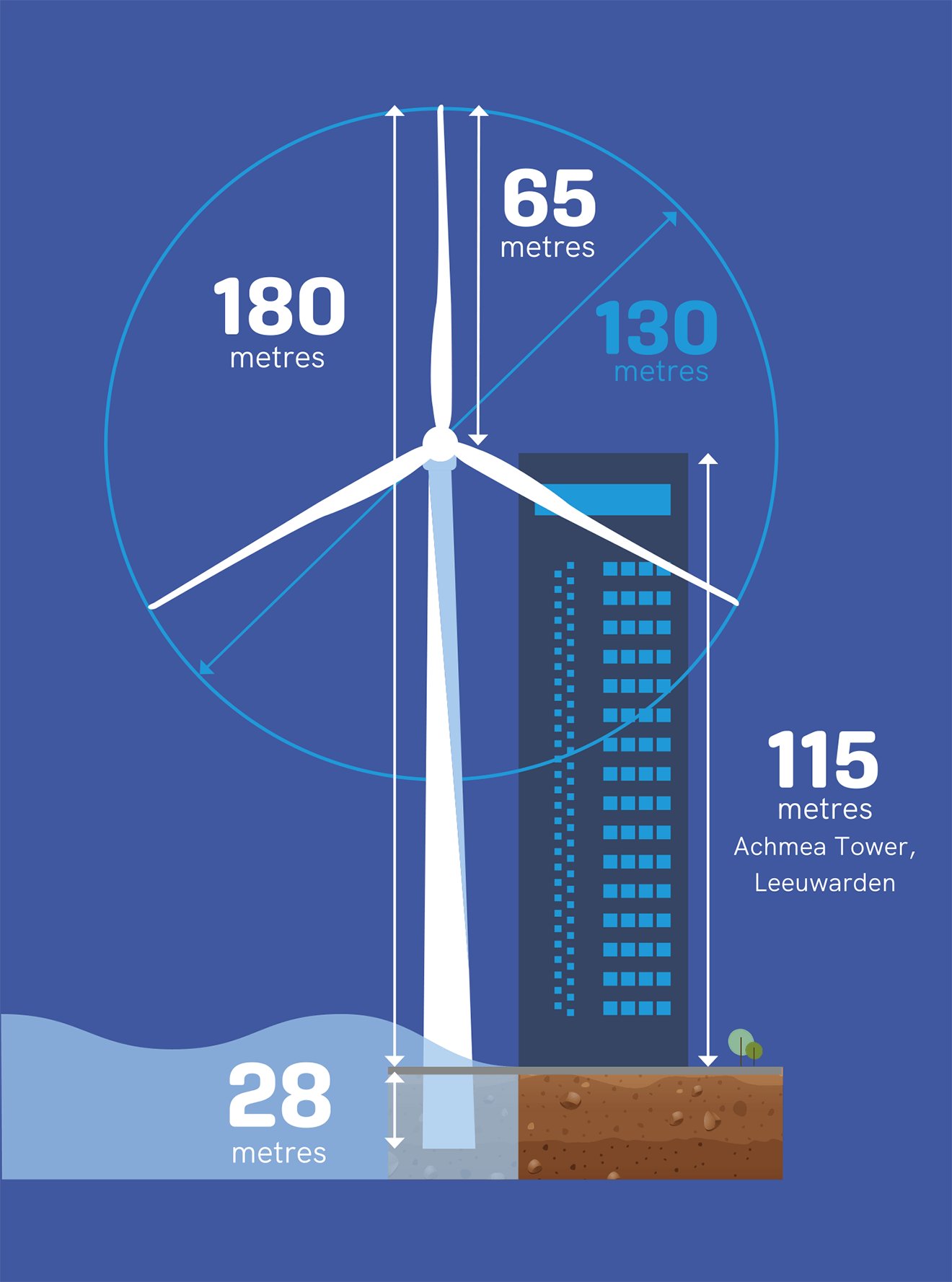
The strong winds on the IJsselmeer will cause the rotor blades of the wind turbines to turn. Behind the rotor blades is the generator. This is put into motion by the rotating movement of the rotor blades, which in turn generates the wind energy.
The generated energy is transported, via a power cable, through the foundation of the wind turbine, underneath the bottom of the IJsselmeer to the transformer station at Breezanddijk. There, the electricity of the wind turbines is converted into high voltage for the electricity grid in Friesland. The electricity enters the Friesland electricity grid via two high-voltage cables.

In the unique substation the electricity from the wind turbines is converted to high voltage for the electricity grid in Friesland. Aluminium plates on the outside wall of the new transformer station (42 metres long, 18 metres wide and 7 metres high) literally show the power of the wind. The manner in which flexible parts of these plates have been mounted, allows them to move in the wind.
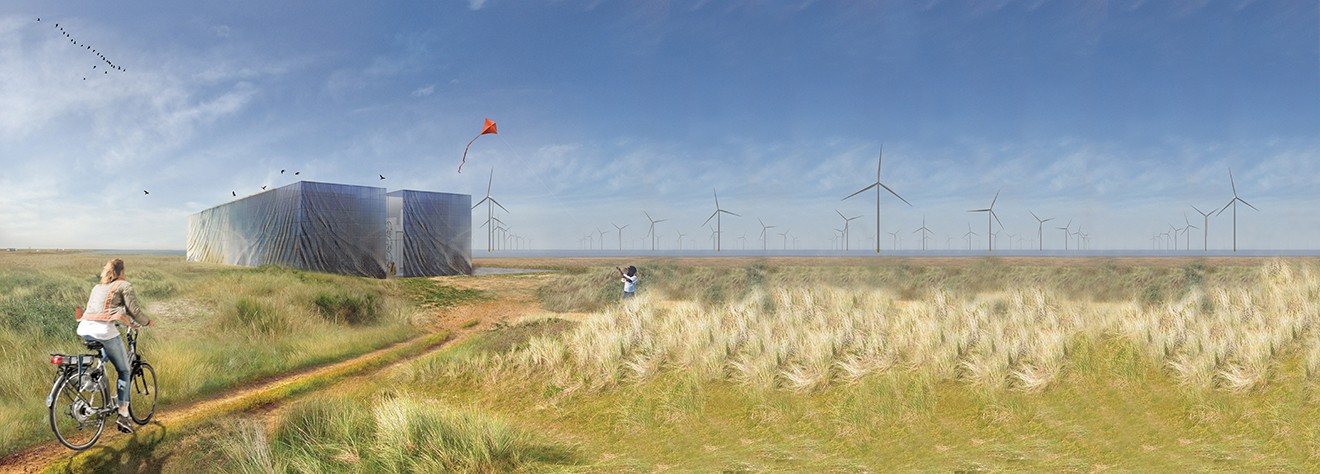
The building has an educational function. Through glass walls and from the information in the building visitors can learn about wind power and see how the green electricity is brought over from the IJsselmeer to Friesland.
In order to bring the generated energy from the wind turbines to the users, we lay power cables on land and in the IJsselmeer. The power cables run from the wind turbines in the IJsselmeer to the transformer station in Breezanddijk. The power will run from the transformer station via cables in the Afsluitdijk and along the A7 to the TenneT high-voltage grid at Oudehaske.
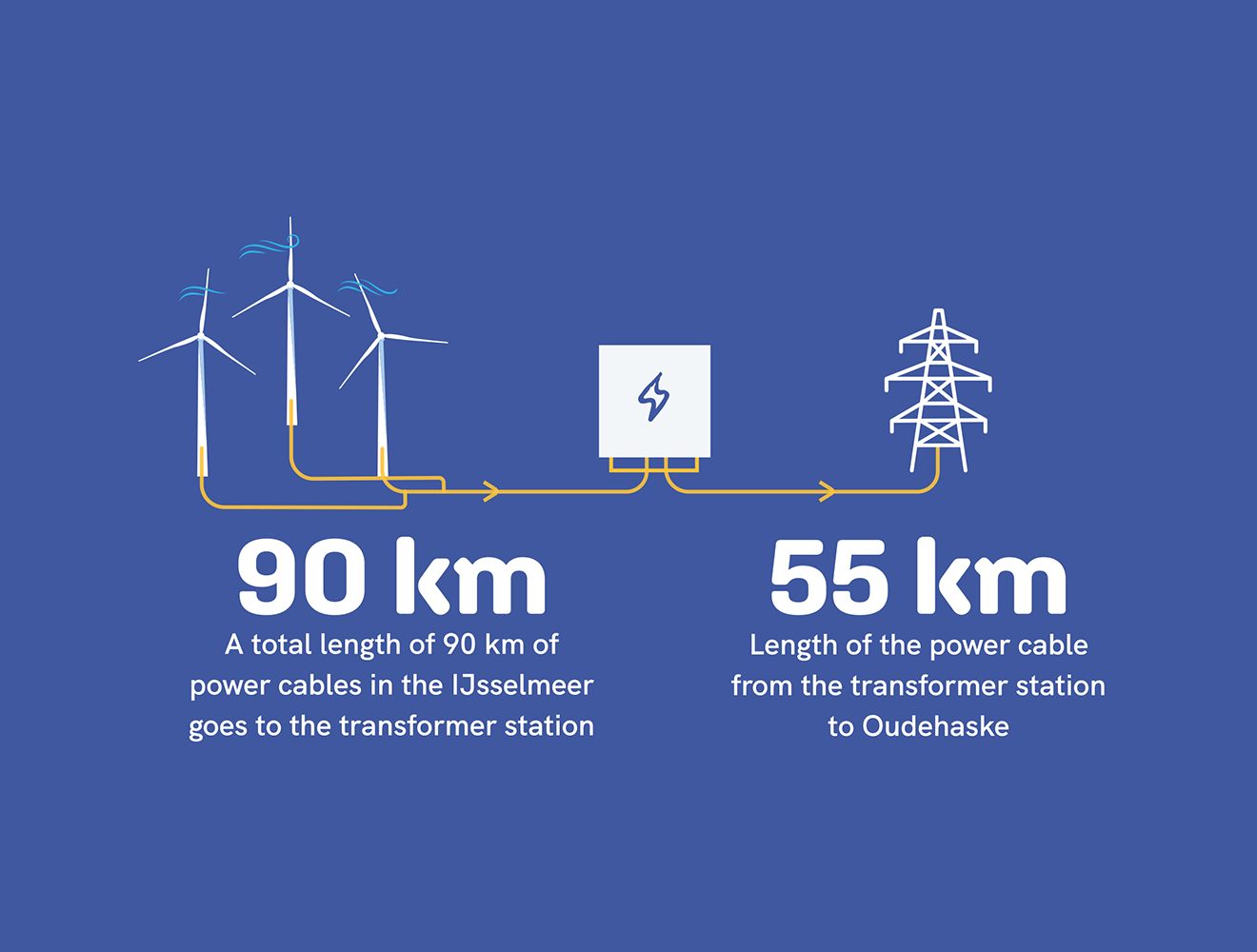
Contracting consortium Zuiderzeewind built the nature reserve for Windpark Fryslân. The island consists of an area of 2 hectares above water and two shallow water zones together comprising 25 hectares. The area will be protected from waves and currents by an 800 metre long breakwater onto the section above water. The shallow water zones are not open to water traffic. This gives nature time to develop further.
The nature reserve will become an attractive foraging and resting area for birds and alongside it an artificial reef for fish.
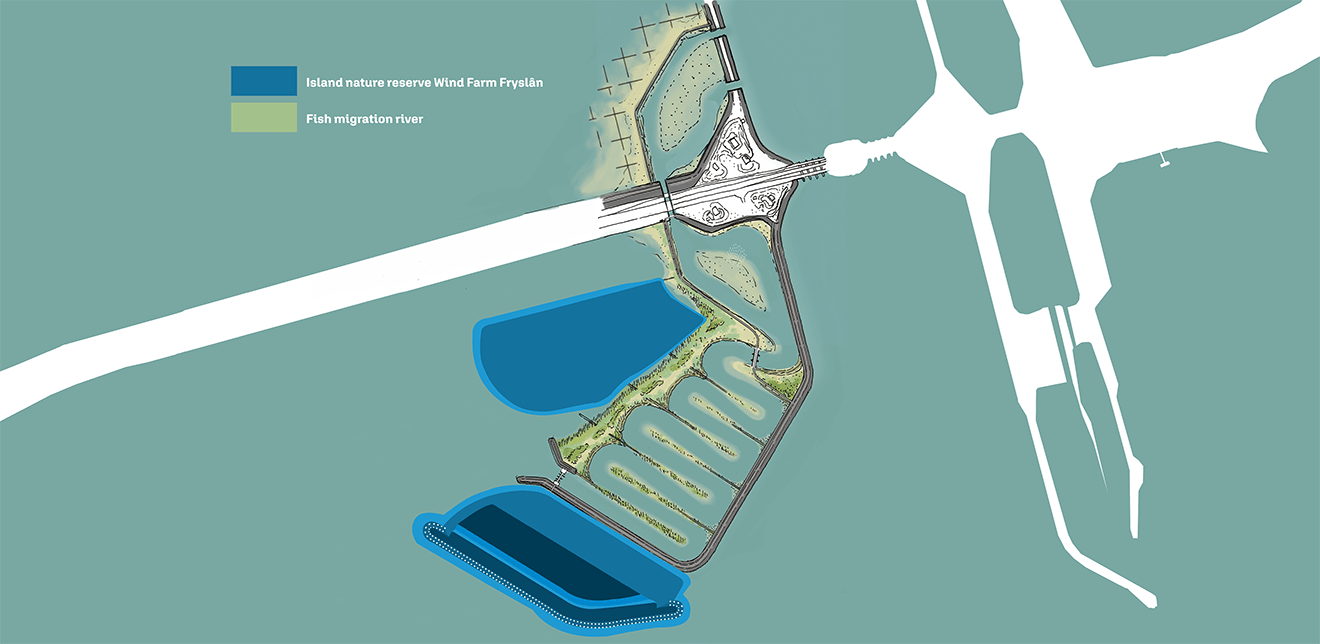
Windpark Fryslân is completed. The 89 wind turbines with a tip height of 180 meters are working and making green energy. By law, wind turbines with a tip height of more than 150 meters must have aviation lighting. At Windpark Fryslân, this applies to the outermost 30 wind turbines. Thanks to the new radar detection system, this lighting can soon be switched off at night when there is no air traffic in the vicinity of the wind farm.
Wind farm lighting
The wind turbines have a lamp at the top that emits white light during the day and red light during the night. Halfway up the tower has illumination that continuously emits red light at night.
Windpark Fryslân has taken various measures to limit the nuisance caused by the turbine lighting for the environment:
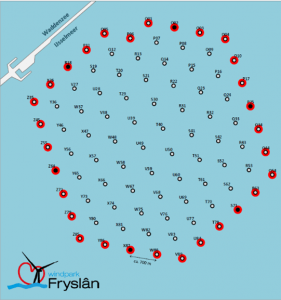
Less light nuisance
Although Windpark Fryslân was not 100% sure that this solution could be applied permanently, the wind farm decided to invest in the radar detection system to prevent nuisance for residents as much as possible.
The radar detection system at Kornwerderzand scans the airspace for aircraft near the wind farm. The location of the system was chosen because of the unobstructed view of the environment, which is necessary for the system to work as effectively and safely as possible.

Radar Detection System
After the aircraft have left the warning zone, the lighting is switched off again, with a time delay of 1 minute.

Rules and legislation
For approval of the radar detection system, Wind Park Fryslân and the Municipality of Súdwest Fryslân have requested advice from the Inspectie Leefomgeving en Transport (ILT). The advice was positively answered by ILT based on the documentation provided and proposed regulation. ILT has no objection to a pilot in which a radar detection system is applied at Wind Park Fryslân.
The definite application of radar detection follows after it has been demonstrated that the radar system works properly by means of a test flight. During this flight, measuring equipment is used to test whether the aircraft is correctly detected under all conditions. This test will be carried out after the installation and tuning of the radar system in October and November.
Windpark Fryslân expects that the radar detection system will significantly reduce the nuisance caused by the lighting in the area.
Windpark Fryslân will be a safe sailing area and all turbines will be fitted with nautical safety signs. The safety measures include the indication of wind turbines on nautical charts. Within Windpark Fryslân a compulsory 50 metre safety distance from a wind turbine will soon apply.







